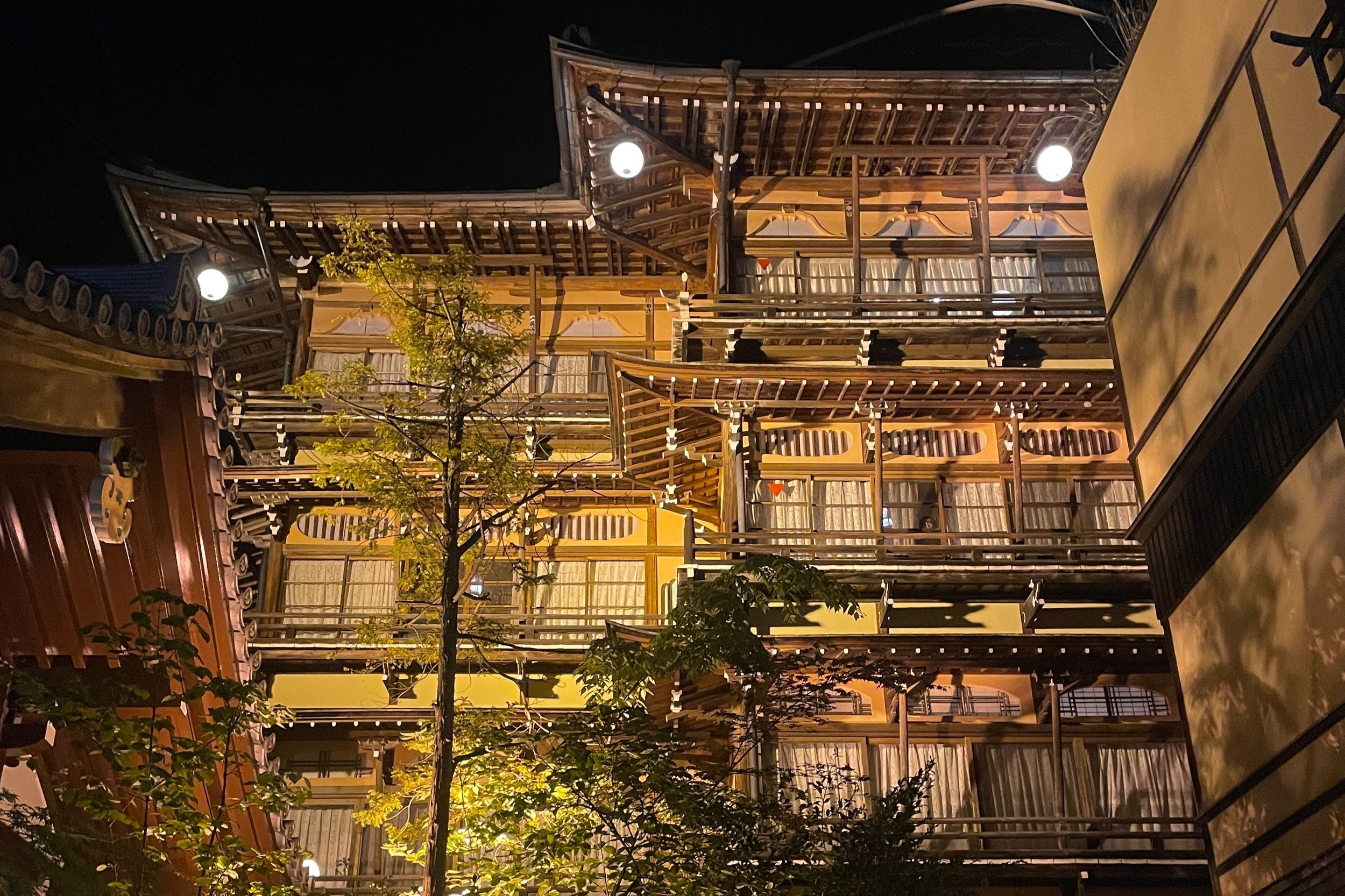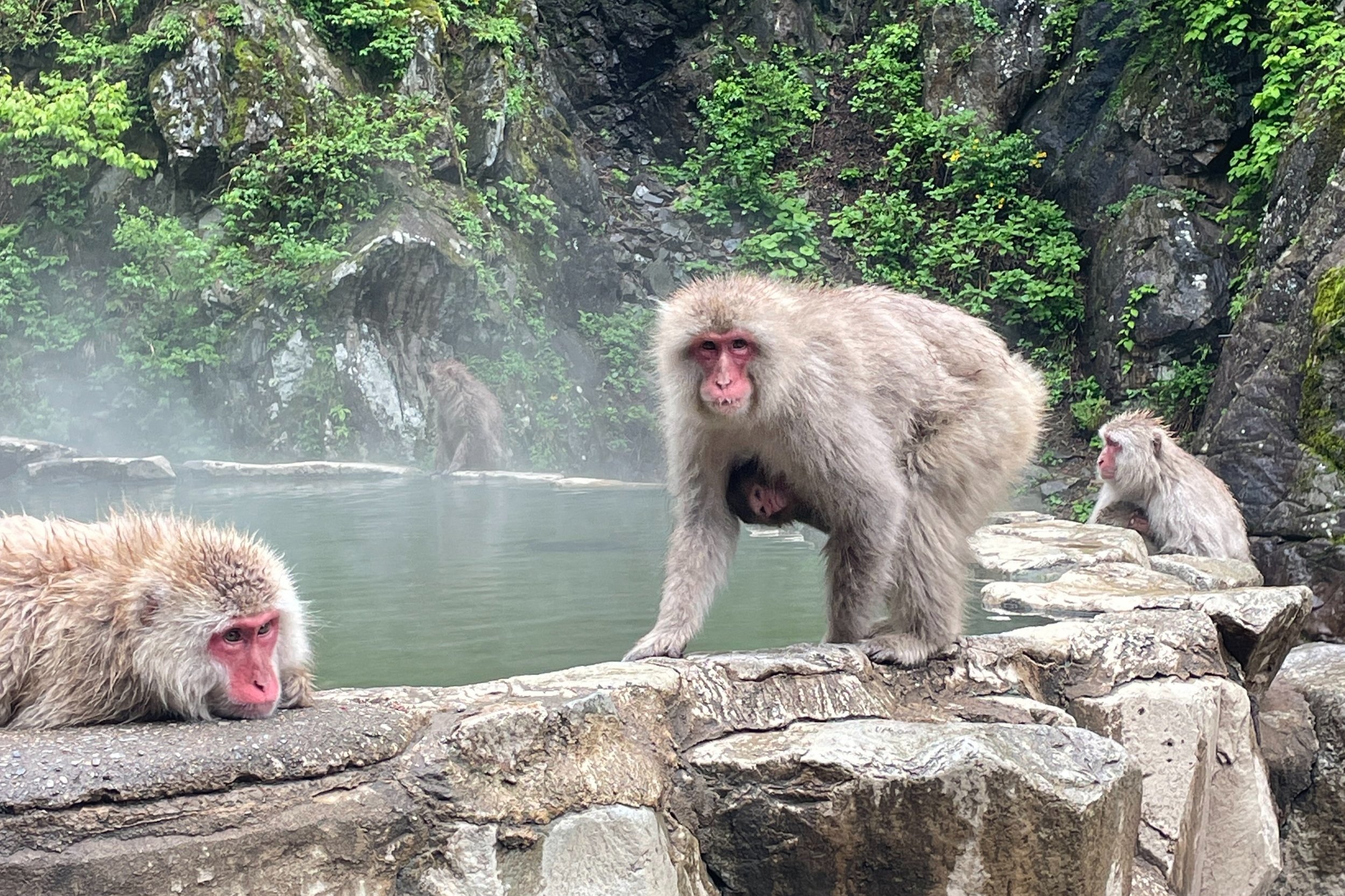How we spent two days in Nagano
Nagano – both the city and the prefecture – don’t always appear on travel itineraries. But we decided to head to central Japan for a couple of reasons. Firstly, we wanted a break from cities between Osaka, Kyoto, and Tokyo. And we wanted to see the snow monkeys in Joshinetsu Kogen National Park.
Where to stay in Nagano
Nagano is known for its mountains and forests. And to the northeast of the city is Shibu Onsen, a resort area famous for its hot springs.
We stayed here two nights at the Kokuya Ryokan Shibu Onsen 渋温泉古久屋 which has been operating since the 1600s and has eight private baths. There are plenty of ryokans to choose from in Shibu, and there are public onsens that everyone can use although they are separated by gender.
Another benefit of staying in Shibu Onsen is that it’s only a 15 minute drive from Jigokudani Monkey Park – the best place to see snow monkeys in the wild.
How to get around Nagano
The best way to get around Nagano is to drive, as it’s quite rural and the public transport isn’t great. Hiring a car meant we could drive to the national parks and not have to worry about timetables. We hired a car from Toyota for about £350 for four days including drop off in Hakone rather than Nagano.
What is there to do in Nagano?
Nagano prefecture is big. From cities to rural areas known for mountain hikes and alpine skiing, there are plenty of things to do here. The Alps and onsens of Nagano are traditionally more of a winter destination. But we visited in May when the weather is warmer and most tourists head to different areas of Japan. This meant it was much quieter and it almost felt like we had some spots to ourselves.
These were our favourite things to do in Nagano.
Stay at a ryokan and visit an onsen
Whether you stay at a ryokan with its own private onsens or head to a public bath, Nagano is one of the best places in Japan to do it. The Shibu area in the Japanese Alps is famous for its natural hot springs. So we decided to stay at a ryokan in the village where we could use the onsens as much as we liked. The water is often above 40°c but the pools are shallow, and the outdoor onsens are especially relaxing in the evening or in light rain. Different baths are said to cure different ailments and if you visit all ten locations in the Shibu resort it’s said to bring prosperity and good health.
Visit the snow monkeys
Japan’s famous snow monkeys – Japanese macaques that bathe in an onsen during the snowy winter months – can be found in Jigokudani in Joshinetsu Kogen National Park. The adorable monkeys show up every day. But it’s best to check the live cam to see whether they’ve arrived yet before you make the 2km walk from the car park.
It costs ¥800 per person to enter the park but you can stay as long as you like. We were there for about an hour and a half watching the monkeys. Some of the babies had only been born the day before and were so tiny. While older babies were playing with each other and climbing all over the walls and bridges.
Explore Joshin’etsukogen National Park
In the winter this area is popular for skiing. But if you visit during the warmer months you can hike and explore its many ponds and mountain trails. You can even catch a lift to one of its mountain peaks to see amazing views across the valleys, if hiking isn’t your thing.
Go to the Hokusai Museum
We arrived at Jigokudani Yaen Koen to see the snow monkeys before they arrived at their onsen for the day. So we decided to drive to Obuse and check out the Hokusai Museum. The artist is most famous for his Big Wave of Kanagawa painting. But exploring the museum we learned much more about his art and how he dedicated his 90-year life to his craft.
Obuse is also a very quaint little town that’s known for growing chestnuts, so we wandered the streets for a little while after we were finished at the museum, and stopped for coffee in a local cafe.
Matsumoto City Museum of Art 松本市美術館
Matsumoto is the home of Yayoi Kusama, and the City Museum of Art has a whole floor dedicated to her work. Having queued to see Infinity Mirrored Room – A Wish for Human Happiness Calling from Beyond the Universe (2020) at the Guggenheim in Bilbao, and didn’t get tickets for her recent exhibition at the Tate Modern. So it was pretty amazing to explore more of her art with only 2-3 other people in the room! The museum has two other floors full of Japanese art. But entrance to the top floor only costs just ¥420 (£2.15).
Matsumoto Castle
Matsumoto Castle is one of only 12 original castles that still stand in Japan. For this reason it’s one of the most interesting to explore inside. But we didn’t have much time as we were on our way to Fuji from Nagano and decided to wander the grounds instead. We spent 20-30 minutes walking around the castle and its ponds. The historic building is impressive and beautiful against the modern backdrop of the city.
Narai-juku
The quaint town of Narai-juku is nestled in Nagano’s Kisk Valley. We stopped here on our way to Fuji, and could easily have spent a couple of hours wandering the tiny streets, exploring the shops and izakayas. Sadly it was raining! So we only stayed about 30 minutes.
When is the best time of year to visit Nagano?
Don’t let its reputation as a winter sports resort put you off visiting Nagano at any time of year. The prefecture is beautiful with plenty of rural spots for hiking and exploring the forests and mountains in warmer weather.
Find out more about our full one month in Japan itinerary here.








